This post may contain affiliate links. If you click on one and purchase something, I may receive an affiliate commission — at no extra cost to you.
The first time I went to Thailand in 2014, I made a compromise with my friend and went down to the islands after we hit up Bangkok. But northern Thailand, and specifically Chiang Mai, remained at the top of my bucket list.
So after I wrapped up my tour of China last fall, I immediately flew to Chiang Mai. Over the subsequent 2+ months, I spent weeks in this gorgeous city of northern Thailand. From ancient ruins and its gold and orange-robed monks to Thai street food and vegan bistros, there’s a certain charm and so many things to do in Chiang Mai.
Below are my personal suggestions for Chiang Mai: what to do and see and where to eat in the city.
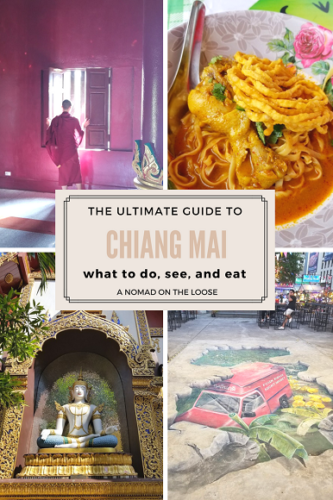
Table of Contents
How to get around Chiang Mai
Most of my suggestions below are located in Chiang Mai’s old city, which is highly accessible by foot and by songthaew.
Songthaews are the converted pickup trucks that serve as shared taxis. In Chiang Mai, they’re red, and you simply flag down a songthaew, tell the driver your destination, and see if he’s going that way.
Pro tip: Instead of telling the driver your exact destination, give him a public landmark such as a temple. This cuts down on language barrier issues and makes it much easier for both parties (versus if you tell them the exact address).
If you’re traveling within the old city, the cost is typically 20 baht (30 if you’re really traversing the entire old city). Don’t bother to ask and negotiate if you’re traveling within the old city; it’ll only make you look like a noob who hasn’t done any research, and you’ll likely be quoted higher.
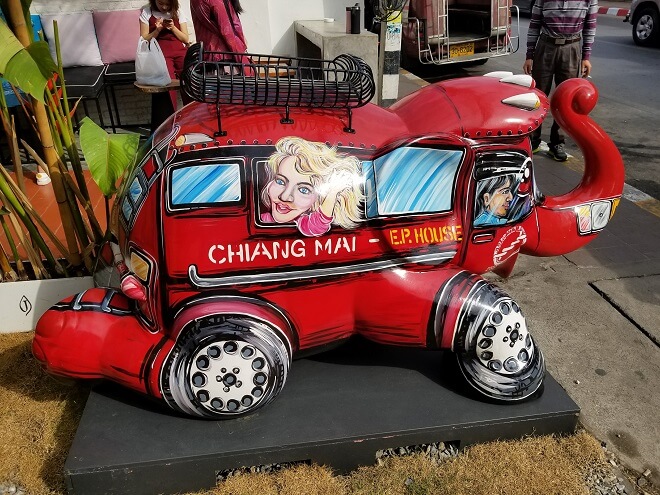
You can also take songthaews out of the city.
Many songthaews offer private and group service to key landmarks such as Doi Suthep that are harder to reach by foot. In these cases, try to get more people together and negotiate your rates. Make sure the prices are roundtrip and confirm how long they’ll wait for you at the attraction.
Another transportation option in Chiang Mai is Grab, the Uber of southeast Asia.
Rides are quite cheap and there’s a solid amount of drivers in the city. I would stick to using Grab around Chiang Mai proper, however. You might get a driver to take you to farther places such as Doi Inthanon National Park, but getting a ride back is much harder. Grab accepts both cash and GrabPay, their digital payments system.
Lastly, you could get around via the ubiquitous scooters that are found all over southeast Asia.
I’d only recommend this option if you actually have experience driving a scooter or motorcycle. If not, there are some places that offer lessons as well, though Chiang Mai would not be my pick for the best location to learn how to drive a scooter.
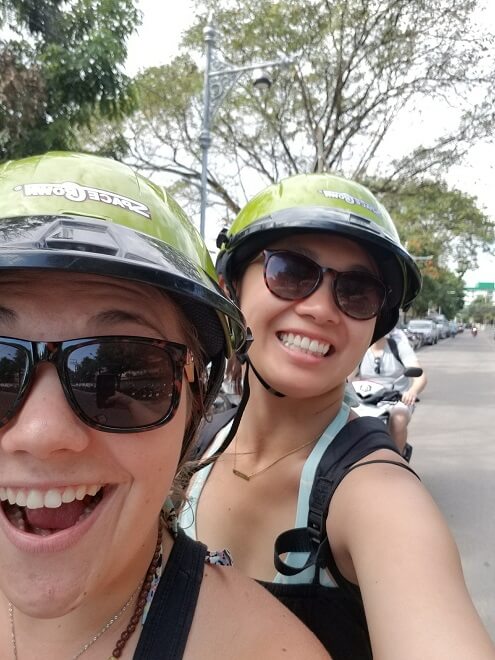
It’s also important to note that technically you need an International Driving Permit in order to drive a scooter or motorcycle in Thailand.
All of the scooter and motorbike rental places are happy to rent you one as long as you have the money and a passport (many will hold this as collateral until you return the bike), and it is solely your responsibility to have the proper license. The police routinely put up checkpoints, and tickets typically run between 500 and 1500 baht for this infraction. In addition, keep in mind that driving scooters and motorcycles can be dangerous, and many people have ended up with serious injuries that can rack up the medical bills and end your trip early.
What to do & see and where to eat in Chiang Mai
If you have the time, I’d highly suggest putting on some good walking shoes, piling on the sunscreen, and spending your first few hours in Chiang Mai just walking around and exploring whatever you happen upon. It’s how I discovered some of my favorite spots in the city, and it’s a good way to get a lay of the land.
But, of course, not everyone has the luxury of time, which is why this guide to what to do and see and where to eat in Chiang Mai exists.
Explore the city’s numerous temples
To come to Chiang Mai and not explore its temples would be criminal as the city is home to some of the most beautiful temples. The majority of them are located within or very close to the Chiang Mai old city, making them easily accessible on foot or otherwise.
Everyone has their favorites, but my suggestion would be to visit
- Wat Chedi Luang for its massive, Angkor-Wat like chedi
- Wat Phantao for its unique teakwood architecture
- Wat Phra Singh for the golden treasure that it is
If you have the opportunity to go farther outside Chiang Mai old city, I’d also suggest Wat Palad, the secret jungle temple.
Interested in learning more about my top four picks as well as other nice wats to explore in the city? Check out this list of the best temples in Chiang Mai.
Chat with some monks
While you’re at some of these temples, don’t miss the chance to chat with a monk or two.
There are many temples in Chiang Mai that offer monk chats, an opportunity for the monks to practice their English and for visitors to learn about Buddhism, the monastic life, and Thailand. Buddhism is the key religion in Thailand, and many Thai males are monks for some amount of time during their lives. (In Thailand, you can become a monk and then leave and return to a layman’s life and then return again if you wish.)
Both men and women are welcome to join, though women should not touch the monks (men should probably refrain from unnecessarily touching others as well). Wat Chedi Luang has the most extensive program in Chiang Mai with monk chats occurring every day until 6 p.m.
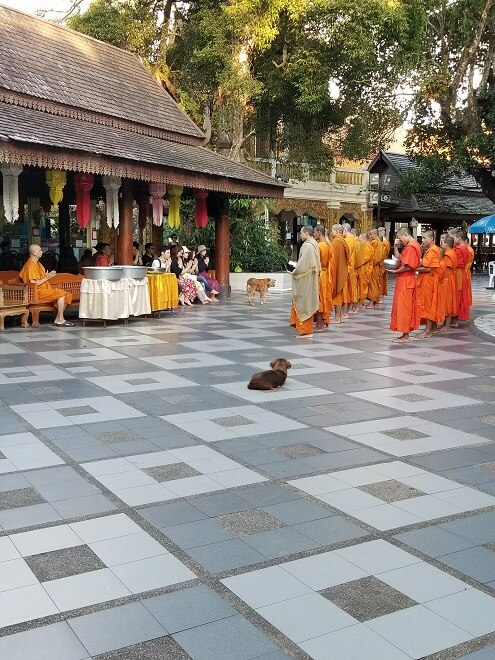
Give alms to monks
If you’re interested in actively experiencing another part of Theravada Buddhism in Thailand, get up early one morning to give alms to the monks.
Per tradition, monks go out to ask for alms each morning to get their food for the day, and many Thai people are consistently up at dusk to give these offerings. Because they eat what people offer, monks in Thailand do not have to be vegetarian.
One sure place to experience this is on the road to Doi Suthep, where monks come down from the hills and locals sell pre-packaged alms that you can buy and then offer up to the monks, who will give you a blessing in return.
My suggestion is to go with either a local or join a brief tour to experience this as having someone explain the practice and the etiquette, as well as the meaning of the blessing (which is given in Pali), makes it a much more holistic and fulfilling experience.
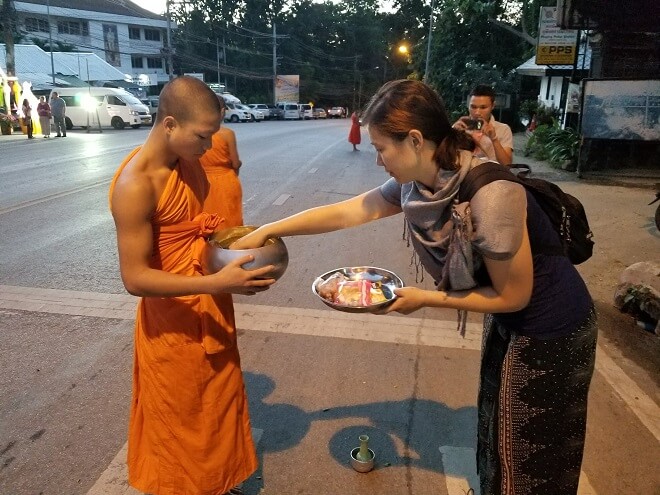
Related: Interested in going further? Explore what it’s like to practice vipassana meditation at Wat Pa Tam Wua Forest Monastery in rural Thailand.
Learn more about Chiang Mai’s Lanna heritage
Thai, Siam, Lanna? If you grew up in the west like me, it’s highly likely that “Lanna” is not part of your Thailand-related vocabulary.
What is today’s northern Thailand used to be part of the Lanna Kingdom during the 13th to 18th centuries, and Chiang Mai was its last and longest-serving capital.
Start your history lesson at the Lanna Folklife Museum to get acquainted with the kingdom. While not the best museum ever, the 90 baht entrance fee is well worth the cultural knowledge, and the stop serves as a midday respite from the blazing heat. The museum is open 8:30 a.m. to 5 p.m. every day except Mondays.
Explore an ancient Lanna capital
Continue your Lanna education by visiting Wiang Kum Kam, the Lanna capital preceding Chiang Mai.
The city was completely abandoned after a series of floods, and for hundreds of years, it was lost to the world until the 1980s, when finds by villagers prompted archaeological digs.
Today, Wiang Kum Kam is a sprawling complex of temples and ruins. Some will call it a mini-Angkor Wat, but don’t kid yourself. It’s not nearly as complete a complex as Angkor Wat, but it’s fascinating nevertheless.
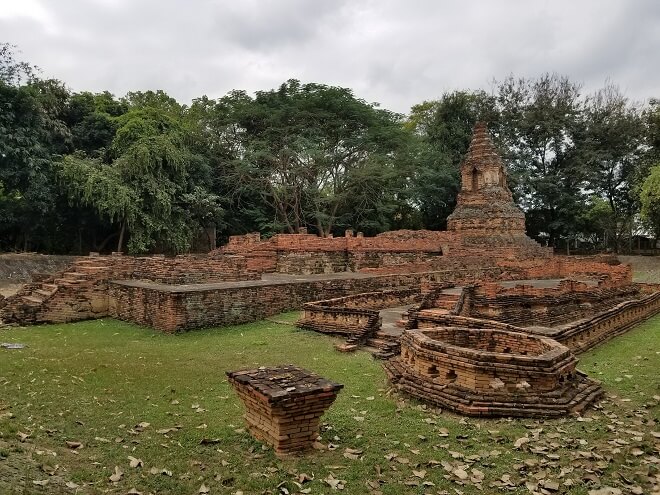
Wiang Kum Kam is about 5 kilometers from Chiang Mai and thus a quick cab ride away (or a leisurely 1ish hour walk if you’re me).
Once there, most people explore the complex either by horse-drawn carriage or via an electric cart. You can hire these at the visitor’s center, which also includes a museum with an animated film on the history of the city as well as fascinating artifacts.
It’s also absolutely doable to explore the complex on foot as well, as yours truly discovered by accident. (I somehow didn’t make it to the visitor’s center until after I’d explored 90% of the complex.) There’s no cost to explore the complex, but you do have to pay for the cart and carriage if you go for those transportation options.
A word of caution: if you’re scared of dogs, Wiang Kum Kam is not the place to go solo. There are many packs of stray dogs that can be quite aggressive, though most will back off as long as you stand your ground. So if you’re not fond of dogs, I’d suggest either touring the complex in a cart or carriage or walking around in a group.
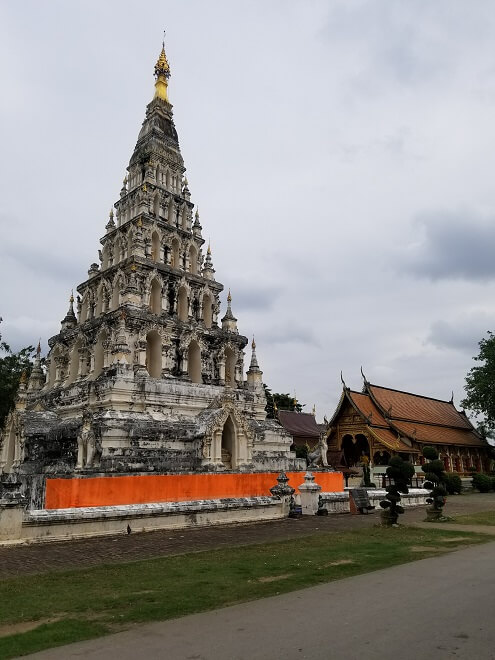
Enjoy the unique massage options of Chiang Mai
You’re in Thailand, get a Thai massage!
I truly think everyone should try a Thai massage at least once, but if you really don’t do well with stretching and pain, almost all of the massage places also offer other options such as Swedish and shiatsu massages. Prices around town typically run around 200-250 baht for 1 hour and 400 baht for 2 hours (but can be way higher for high-end spas).
There are so many massage spots around the city offering so many types of massages, but one of the most special programs is the Chiang Mai Women Correctional Institution. The prison provides massage courses as job training for the inmates, and you can help with their training while getting a great massage.
Arrive early in the morning to make an appointment though, as spots fill up quite fast. If you don’t get a slot at the prison, however, there are also several Women’s Massage Center by Ex-Prisoners branches around town.
Not huge on having someone’s hands all over you? Try a foot reflexology massage instead to help relieve the pain from all the walking. The Chiang Mai Reflexology Center is my favorite and offers 30-minute foot reflexology for 120 baht.
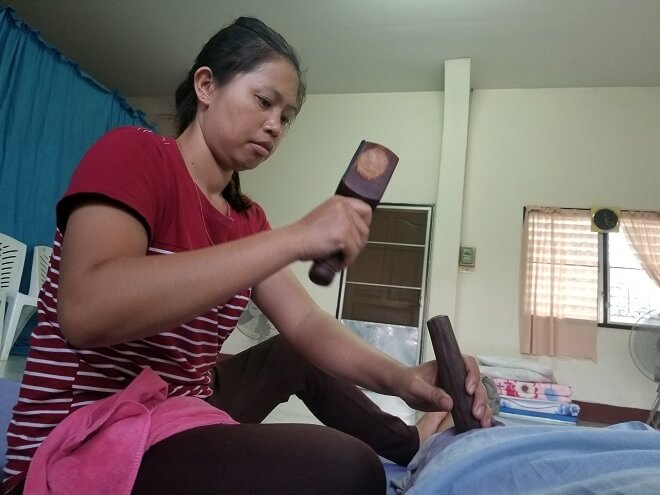
Lastly, you can’t leave Chiang Mai without trying a Thai massage that is special to the region. Tok sen is a Lanna-style massage that is hard to find outside of northern Thailand …and it involves a mallet. Interested? Read more about the tok sen massage here.
Visit all the markets
What is a visit to any city without visiting some sort of market?
Southeast Asia has some of the world’s best markets and I could spend days just walking through them and exploring. I certainly went to Chiang Mai’s various markets multiple times and managed to find exciting new things each time. It was so hard to resist eating and buying everything.
Here is a quick guide to the best of the city’s many markets (with street food markets discussed separately in the next section). In no particular order…
1. Warorot Market
Decidedly more for locals than tourists, Warorot Market is the most popular “locals’ market” among tourists. This typical Thai market sells everything from foods and dry goods to clothing and houseware.
Located east of the old city, Warorot Market is a walkable destination that opens super early in the morning and runs until around 6 or 6:30 p.m. After that, the indoor/covered part of the market is closed but the surrounding stalls stay open.
You can find delicious food options inside and outside the market, and because it is catered more toward locals, you’ll find options that are lesser known to most non-Thai people, such as khanom jeen nam ngiaw, a spicy noodle dish with tomatoes, meat, and blood cubes.
It is also one of the only places in Chiang Mai where I consistently found khao lam for sale. If you think sticky mango rice is the best dessert out of Thailand, you probably haven’t had khao lam. It’s made with sticky rice, sugar, grated coconut, coconut milk, and usually red or black beans and stuffed and cooked inside a bamboo tube, and it’s absolutely heavenly.
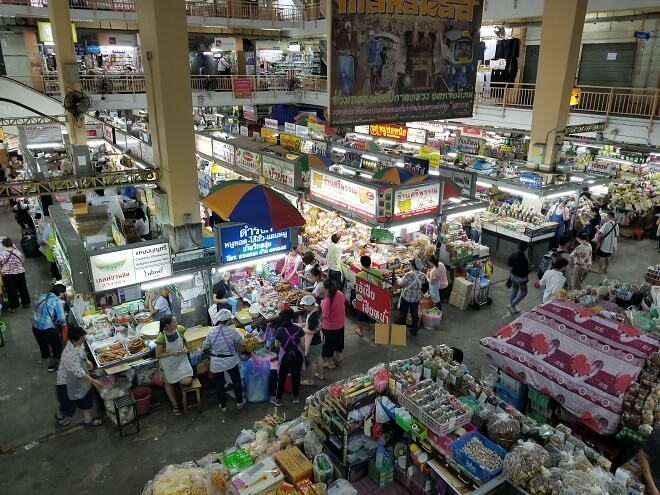
2. Saturday Night Market/Wualai Walking Street
This weekly market is held just south of the old city’s south gate, and it’s massive.
You can find every sort of vendor here from those selling typical souvenirs such as magnets and keychains to those selling handmade artwork and jewelry. You’ll also find an array for food carts selling a variety of Thai foods. You’re sure to find something you like. The only question is whether you’ll have enough space to eat everything you want to eat.
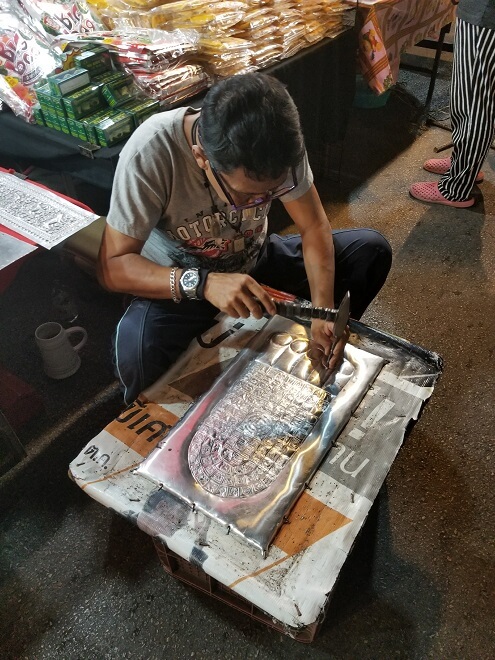
3. Sunday Night Market/Tha Pae Walking Street
Like its Saturday night counterpart, the Sunday Night Market draws massive crowds out to get good eats and peruse vendors’ latest offerings.
It spans several streets and blocks and is significantly bigger than the Saturday night one, and you have to be pretty strategic to truly cover everything. You’ll likely see some of the same vendors as the Saturday Night Market plus many more.
This night market also has a lot of food options, though they tend to be more scattered around than in concentrated pods.
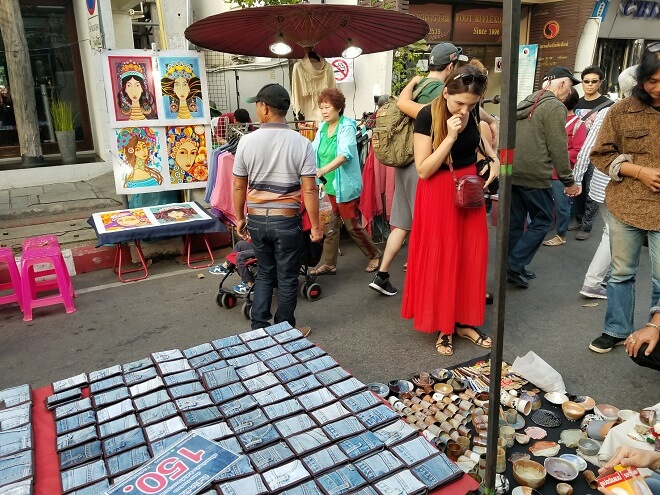
4. Chiang Mai Night Bazaar
Perhaps the most popular night market, the Night Bazaar is open nightly and is located east of the old city.
Unlike the aforementioned options, however, it tends to sell more mass manufactured items and fewer handmade items and thus is not one of my favorites. It has a solid selection of food options though and is wonderful for people-watching.
5. Kalare Night Bazaar
Across from the Night Bazaar is yet another option. Often times people will call this whole area the “night bazaar,” and in some ways, they are very similar.
The Kalare Night Bazaar’s key difference is that it’s home to Boy Blues, a rooftop rock, blues, and jazz bar opened by local musician Boy, a talented guitarist and vocalist. Its open mic nights feature a variety of both local and expat musicians and is a fun place to see live music in the city.
6. Anusarn Market
Down the street from the Night Bazaar and the Kalare Night Bazaar is yet another market.
Like the Kalare Night Bazaar, sometimes Anusarn Market is bucketed and considered as part of the Night Bazaar, but it is decidedly a quieter and more local market. If you’re not into crowds, this one is a better option for you to explore.
7. Ploen Ruedee Night Market
North of the Night Bazaar, the Kalare Night Bazaar, and the Anusarn Market is this trendy night market that serves up more fusion food than traditional Thai cuisine.
It’s a bit more expensive than the others and I didn’t eat there, but the food selection looked to be good if you’re in need of something different.

Eat street food daily
There is so much amazing street food in Chiang Mai, especially in and around the old city. It’d be a shame if you visited without giving them a try.
Here are some of my favorite spots around the city (again in no particular order):
1. Chang Puak Gate Market on Manee Nopparat Road is right outside of the north gate of the old city, and every night, a collection of stalls is set up to serve a variety of good eats.
A highlight here is Khao Kha Moo Chang Phueak, or more famously known as the Cowboy Hat Lady.
Rocketed to fame by her Stetson and Anthony Bourdain’s recommendation on Parts Unknown (may he RIP), the Cowboy Hat Lady serves up pork leg and rice dishes that are worthy of ordering seconds (I did!).
Pro tip: no need to wait in the long lines if you’re hoping to eat immediately. The line is for to-go orders. You can simply sit down and one of her staff members will get your order and serve you pretty much immediately. Large plates are 50 baht and include a soft-boiled egg.
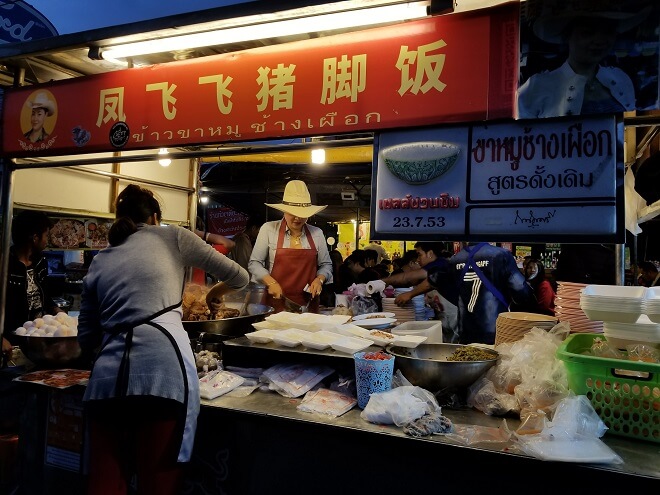
2. The stalls of Bumrung Buri Road near the south gate of the old city is another favorite. Located right across Bumrung Buri Market, the area is full of food carts serving delicious options.
There’s also a wonderful pork leg guy here, though I don’t remember the name of his stall. His was also 50 baht a plate and the portion was slightly larger than those of the Cowboy Hat Lady.
The best khao soi (northern Thai specialty) I’ve ever had was also here. It was 50 baht for this dish. Unfortunately, my photo and notes about what her cart was called disappeared, but this lady has newspaper clippings posted on her cart to show her media recognition.
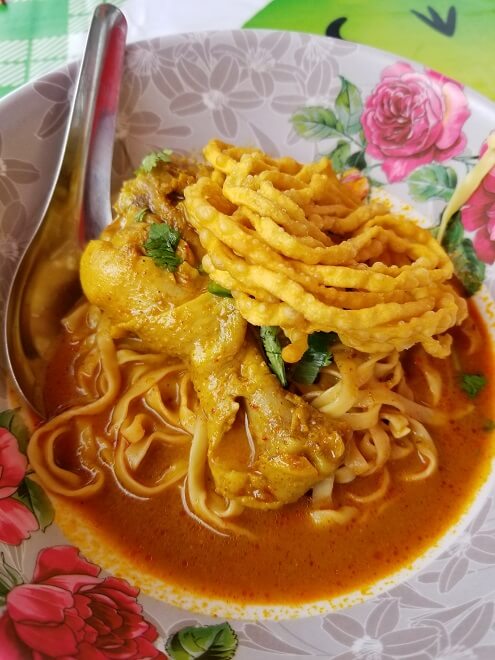
There are also two free-standing carts worthy of note:
3. The pad Thai lady
She and her helper (I believe her daughter) park their little cart in front of Wat Mahawan right next to the 7-Eleven and serves up the best Thai-style fried noodles (pad Thai) for 30 baht. They also do fried rice, fried noodle, and rice & omelet dishes.
4. Paday Rotee cart
This long-time cart is run by a husband-and-wife team (now with an assistant) and has been serving up incredibly delicious roti/rotee for longer than I’ve been alive. They serve their delicious sweet snacks in front of Wat Mahawan (a stone’s throw away from the pad Thai lady) for 15-35 baht a serving, depending on what you order.
Have lots of smoothies
Thailand (and southeast Asia in general) is home to so many delicious fruits, and smoothies are one of the favorite ways to consume those fruits for both locals and tourists alike! There are so many options and you can always experiment with different flavor combos.
No need to worry about ice sanitation in Thailand’s larger cities like Chiang Mai. While I still wouldn’t advise drinking tap water here, I’ve never once had any issues with the ice used in my drinks, and I drank a lot of fruit smoothies during those hot, humid days.
Note that in many cases, they’ll add additional sugar to smoothies as the status quo, so if you’d rather stick to natural fructose, make sure to tell them “no sugar.”
My favorite smoothie maker in Chiang Mai is the lady whose cart is between the 7-Eleven and the red songthaew waiting spot near the north gate. It’s the corner of Manee Nopparat Road and Changhuak Road.
Get your yoga on
While it’s not as crazy as the yoga offerings in Bali, Chiang Mai has a number of great options if you’re looking for some respite and a workout at the same time.
Prices aren’t as affordable as you might expect given how inexpensive everything else is, so it is mostly expats and tourists who frequent these classes. My favorite is Freedom Yoga, which offers 90-minute classes for 250 baht.
Related: Yoga retreats more your thing? Here are some great reasons to choose Thailand as your yoga retreat destination.
Befriend an elephant
While technically not in Chiang Mai proper, elephant encounters are one of the most popular experiences for those traveling to Chiang Mai.
The preeminent option near Chiang Mai is Elephant Nature Park. I didn’t have an elephant experience there as I’d had one on a previous trip to Thailand, but I personally know many people who have had fantastic experiences there.
Because of its fame and its limited capacity, the park tends to fill up quickly, so it’s good to book this way in advance. I’m told that often times you need to book two to three months in advance if you wish to visit during the high season (November to February).
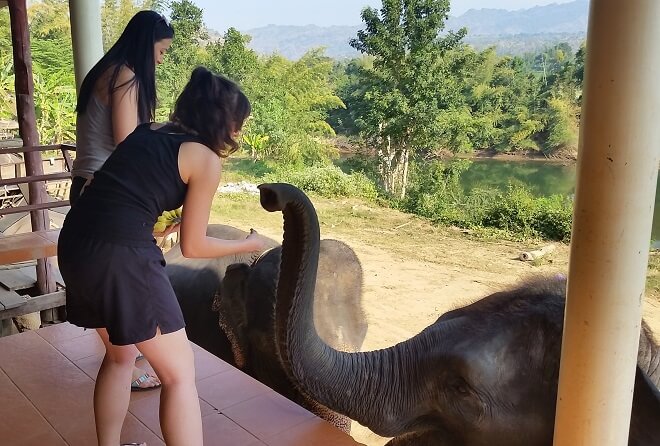
Check out the nightlife
If you’re interested in getting out around town at night, start with one of these places:
- Zoe in the Yellow, the rowdy, crowded epicenter of Chiang Mai’s nightlife.
- Roots Rock Reggae, a chiller option tucked behind Zoe in the Yellow.
- Boy Blues, the best local blues bar in town, where some of the best local and expat talent come out to open mic nights.
The best hostels in Chiang Mai
One final section of this guide: where to stay.
I know not everyone is hostel-friendly, but I only stayed in hostels while in Chiang Mai so I can’t make recommendations about hotels and such. If you’re open to hostels, however, here are some great ones to check out.
- The Living Place 1 - Aree and V (and their pups!) make this place a true hostel family (they live in the hostel, too). The facilities are clean, the lockers are huge, the price is hard to beat, and most importantly, Aree and V are incredibly friendly and helpful without being overbearing. It is located just outside the old city’s east gate.
- Thailandwow - Khai makes this place a relaxing hangout in the heart of Chiang Mai’s old city, close to the south gate. He also cooks family-style dinners often to share not just his home but also his food with guests (donation-based, and he never solicits them).
- Monkey Toe Guesthouse - Slightly less family-like than the other two, but it’s well-located just outside of the old city’s north gate. Their bunk beds are huge and have barrier walls, making them perfect for more introverted travelers and anyone looking for more privacy.
What else do you want to know about visiting Chiang Mai? Ask away in the comments!
Pin it to share it!






This is making me miss Chiang Mai so much! The temples, the markets, the food and most importantly, the people. It is my favourite city in Thailand as well. Great guide!
Incredible guide to Chiang Mai! You’ve gone into so much detail about the best things to do, it’s really made me want to go back. Our time in Chiang Mai was a little tainted as my husband got food poisoning in Bangkok so I’m desperate to try all that incredible food you found. I did try Khao Soi once but can’t wait to have it again somewhere different. Yummmm
Awww I definitely know how that can color your experience in a place. A bit how we felt about Phu Quoc, Vietnam. There was an incoming typhoon and my boyfriend had the flu or something, and it sadly is pretty low on our list of places we’ve been. Hope the next time is amazing!
Aw this brings back so many amazing memories. Love chiang mai and hope to go back this year! Have some new things to check off from your post now, thanks 🙂
Incredible guide, You have mentioned everything in detail and would love to this on my trip to thailand.
Great post with lots of good info. Went to Chiang Mai 16 years ago and loved the night markets.
Ooh I would have loved to see what it was like 16 years ago!
Great post on Chiang Mai. I need to go back because the last time I went was during Songkran so I didn’t have time to take in the sights. Thanks for talking about Elephant Nature Park. They do such good work with the elephants unlike many of the other so called “conservations”…
I hear Songkran is a magical time, but yes, a trip outside the festivals is probably due, too!
[…] you are done with the Chiang Mai sightseeing, a hike is a refreshing alternative. Start your Chiang Mai hiking adventure near the Zoo. In front […]
Thank you so much for the great tips!! I’m currently in Chiang Mai and your post gave me lot of motivation and positive energy 🙂
Great to hear, thanks for the positive feedback, Alice! Enjoy your time there — I’m jealous, wish I was there right now!
Wonderful post - I visited Chiang Mai 2 years ago and wish I knew about some of the markets you mentioned in your post! Guess I have a good reason to go back now! 🙂
I love this post. Have been to Thailand many times and gave alms to monks to. You kindled my memories. 🙂
I’ve never been to Chiang Mai but your article makes me want to 🙂 great recommendations, thanks for sharing!
I’ve heard this is a great place to be a digital nomad so thank you as I am hoping to spend some time there so it will be handy to know what to see, do and eat.
It definitely is and has been for years. I’m sure with COVID changing remote work policies for many folks, it’ll only become more popular. Just avoid fire season if you can — air quality can be real bad during those burns.
I’ve been to Thailand so many times but only once to Chiang Mai. I’m always stuck in Bangkok (love that city — can’t even explain why). But after reading this article, I know I need to visit again. There’s so much more to see and do. I like all your food suggestions and will definitely try the tok sen massage (because I’m a masochist like that!) Haha.
Hahahaha yes! I would LOVE a tok sen massage.. or any massage, really. It’s been at least 1.5 years since I got a massage.
But yes Chiang Mai, Chiang Rai, the whole northern Thailand is my jam. I love them soooo much.
I enjoyed reading this so much! I love Chiang Mai, and feel like I discover more on every trip. Can’t wait to be back!
Some great tips here as I’m heading back to Chang Mai when I can….I have distant memories of riding a motor bike in the national park but there’s so much more to do…thanks for sharing! .
Chiang Mai is one of my favorite places in Thailand! Love the post!
What a comprehensive and useful guide. I have been to Thailand but I missed Chiang Mai. Your blog makes me want to go back to Thailand and discover Chiang Mai.